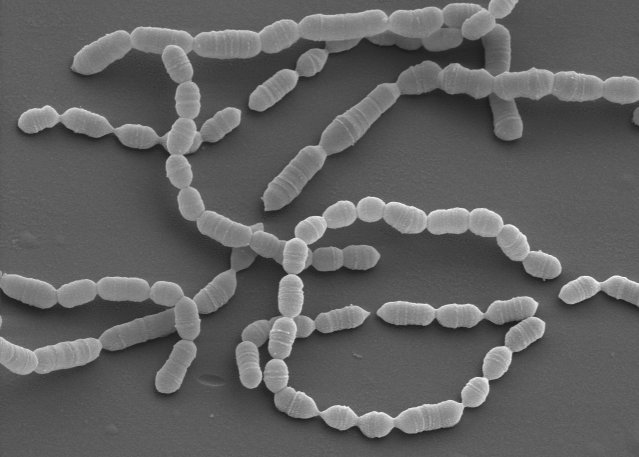Olsenella - mucosal-immunology-lab/bacterial-database GitHub Wiki
| Bacterial Information | Value |
|---|---|
| Taxonomy level | Genus |
| NCBI Taxonomy ID | 133925 |
| Phylum | Actinobacteria |
| Family | Atopobiaceae |
| Gram stain | Gram-positive |
| Oxygen requirements | Obligate anaerobic; micro-aerotolerant |
| Spore-forming | No |
| Motile | No |
| Image |  |
Olsenella are Gram-positive, non-spore-forming, non-motile, obligate anaerobes. The type species is Olsenella uli. They are typically involved in endodontic infections in humans (regularly from lesion sites such as gingival and sub-gingival sites with periodontitis)(Kraatz 2011)(Dewhirst 2001), but have been detected in other clinical settings.
Cells are small, elliptical, and occur singly, in pairs, and in short or serpentine chains. Fermentation products from glucose are lactic and acetic acids. Cells are catalase-negative, urease-negative, and do not produce indole or reduce nitrate. The major fatty acid component of the cell wall is C18:1 cis9. The G+C content of the DNA is 63-64 mol% (Dewhirst 2001).
Olsenella can be detected in oral cavity samples, gastrointestinal samples, and faeces.
There has been a case report of Olsenella uli infection-related pneumonia (Yan 2021) which was likely a case of oral cavity bacteria-associated aspiration pneumonia.
The patient (30-year history of cigarette smoking) was experiencing haemoptysis (bloody cough) without obvious causes. Following anti-infection and haemostatic treatment, the haemoptysis ceased, but a 38.9°C fever began. Computed tomography (CT) revealed bilateral pneumonia and emphysema, pyogenic necrosis, and an encapsulated pyothorax – certainly the smoking history was a significant risk factor here.
Olsenella has been identified as increased in the stool of Parkinson's disease (PD) patients compared to healthy controls (Romo-Vaquero 2022). It was not however differentially abundant when comparing mild and severe forms of PD. Interestingly, a previous study showed correlations between serum p-cresol levels in PD patients, Olsenella (a p-cresol producer), and firmer stool consistency and constipation. However, as in this study, these factors were not linked with PD severity (Cirstea 2020).
